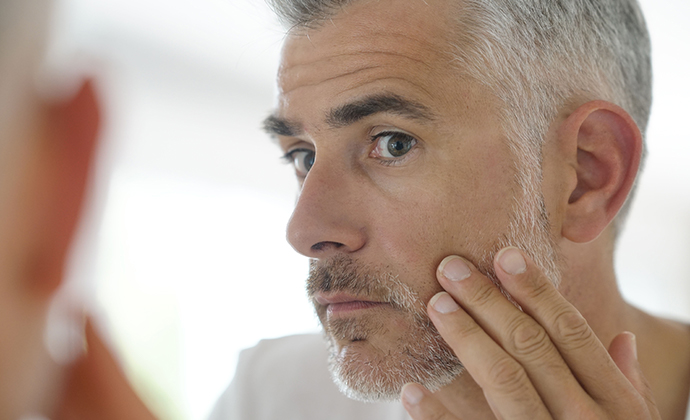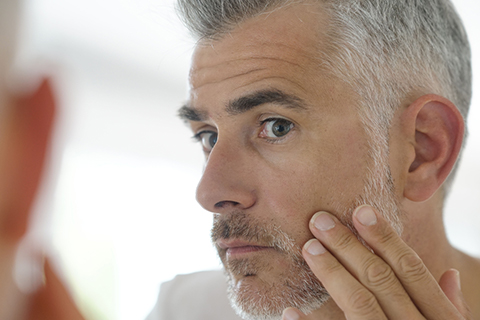What Is Healthy Aging?
Healthy aging sounds like an endeavor that everyone can get behind. None of us are fond of the aging process, developing wrinkles and grey hair. We all are looking for solutions that can postpone or reverse the common signs of aging.
But the idea of healthy aging is not to be confused with anti-aging. Aging is inevitable. There are no methods or products that can effectively turn back time. And the search for the proverbial "fountain of youth" continues to escape us.
Healthy aging is a focus on preserving your capabilities of having a fulfilling lifestyle as you get older.
Healthy aging is about doing what you love.
It's not about simply being healthy. Healthy aging is ensuring an individual can enjoy a high quality of life in their later years. The focus centers on retaining productivity, meaning, and purpose as you age.
Rather than viewing older age as a sunsetting of activity, healthy aging builds upon the idea that you can continually do the things you love, add more goals, and explore future endeavors.
Healthy aging is about functional ability.
Healthy aging is the recent focus of The World Health Organization (WHO) for the upcoming decade (2021-2030).
The WHO defines healthy aging as "the process of developing and maintaining the functional ability that enables wellbeing in older age."
Functional ability is an individual's capability to:
meet their basic needs
learn, grow, and make decisions
be mobile
build and maintain relationships
contribute to society
These capabilities are determined by two things:
1. Intrinsic Capacity—all physical and mental capacities of an individual, including their ability to walk, think, see, hear, and remember.
2. The Environment—all the surrounding factors that can impact an individual, including the home, community, and societal elements (i.e., relationships, health policies, support systems.)
Functional ability is about maintaining independence so that you can continue to grow and enrich your life and other people's lives.
Healthy aging is not the absence of diseases.
One way the WHO pushes the agenda of healthy aging reform is through social policy, particularly one that sheds the traditional model of addressing diseases to maintain functional ability.
An article published in The Journal of Gerontology highlights the WHO's innovative model of "shifting from disease-centered frameworks toward more function-centered paradigms."
Being free of disease is not the focus of healthy aging, and the WHO seeks to open the experience to be more inclusive. Everyone and anyone can experience healthy aging.
In Frontiers in Medicine, Giulia Belloni and Matteo Cesari from the University of Milan look at how viewing frailty and intrinsic capacity from a functional perspective could positively change healthcare.
Belloni and Cesari state,
"Under this perspective, both frailty and intrinsic capacity may help clinicians at understanding the complex health needs and priorities of older people as well as trigger tailored actions to promote healthy aging."
Healthy aging is a lifestyle.
A bountiful amount of research identifies how we can pursue a healthy aging lifestyle. Here are a few things to be mindful of when building out a healthy aging regimen:
1. Physical Exercise
Physical exercise is the cornerstone of any healthy aging program. It's never too late to incorporate a physical routine.
Scientific evidence suggests that regular physical activity is beneficial for retaining your physical independence. And exercise can be vitally important to reduce the risk of physical impairments at an older age.
For example, in a review published in Cochrane Database of Systematic Reviews, regularly engaging in balance and functional exercises reduced participants’ rate of falls by 24%.
Exercise can also benefit an individual's heart function. A paper published in The American Journal of Cardiology underlines how the benefits of leisure-time physical activities, or LTPA, reduce the risk of a coronary event, particularly for participants over 65. LTPA includes sports, recreational walking, stretching, biking, and the like.
Regular exercise not only helps you live longer, but it also helps you live better. Research published in Annals of Behavioral Medicine found that previously sedentary seniors experienced psychological benefits after incorporating exercise.
Edward McAuley, leader of the research team behind the study, said,
"The implications of our work are that not only will physical activity potentially add years to your life as we age, but the quality of those years is likely to be improved by regular physical activity,"
2. Healthy Diet
Eating right is not just about your weight. Researchers have found correlations between physical problems and micronutrient deficiencies, especially at an advanced age.
An article published in Nutrients highlights the prevalence of micronutrient deficiencies in older populations. The study showed that vitamin D, folate, vitamin B12, and iron deficiencies were common amongst older adults.
Poor diet is the most common culprit of this problem, but environmental factors may be the more significant underlying reason for dietary changes.
A review published in Advances in Nutrition points out that dramatic lifestyle changes, a frequent occurrence with older adults, can make proper nutrition difficult.
Things like changing family and support dynamics, loss of taste and smell, loss of appetite, dental problems, and lack of access to fresh food can easily contribute to a poor diet.
Also, many age-related conditions make absorption of necessary nutrients more difficult.
The review expresses, "Aging-related inefficiencies in absorption and utilization mean that the requirement for some essential nutrients increases, despite lower energy needs."
Supplementation can be an easy solution to help fill the nutrition gaps left by sub-optimal diet. And earlier adoptions to these routines could help better promote a healthy aging lifestyle.
Healthy aging requires social engagement.
The WHO looks at healthy aging as both an individual and communal approach. It's a reassertion that you can continue to be an active part of society. And it calls for more social responsibility to accomplish this goal.
The American Geriatrics Society (AGS) adds to this need for a social change by emphasizing that healthy aging is looking at age's influence in our lives rather than focusing on longevity.
An AGS white paper explains,
"This new focal point necessitates replacing our current cultural emphasis on staying young with ‘age-friendly concepts of engagement, participation, contribution, interconnectedness, activity, and optimal function.’"
Healthy aging is not just a policy but a positive perspective that requires more awareness every day. It requires an active community that boldly refuses to let their age define them, motivating others to embrace their golden years with positivity.
Related Posts



Answering the Big Questions about Aging



Is Nicotinamide Riboside Really an Anti-Aging Supplement?








